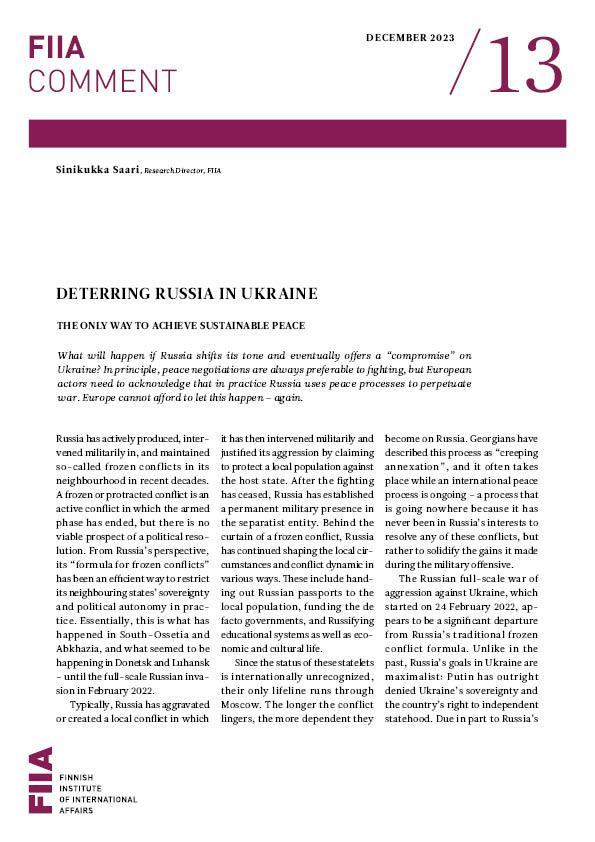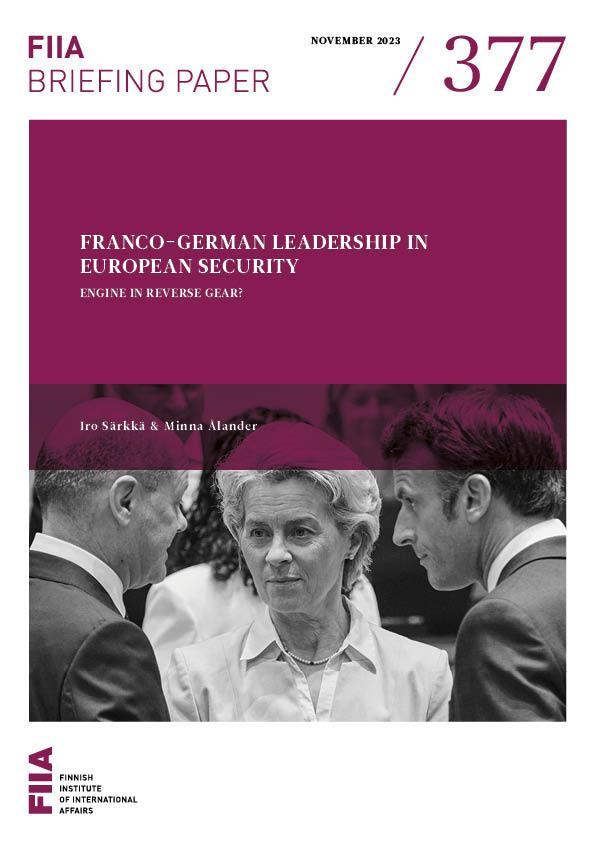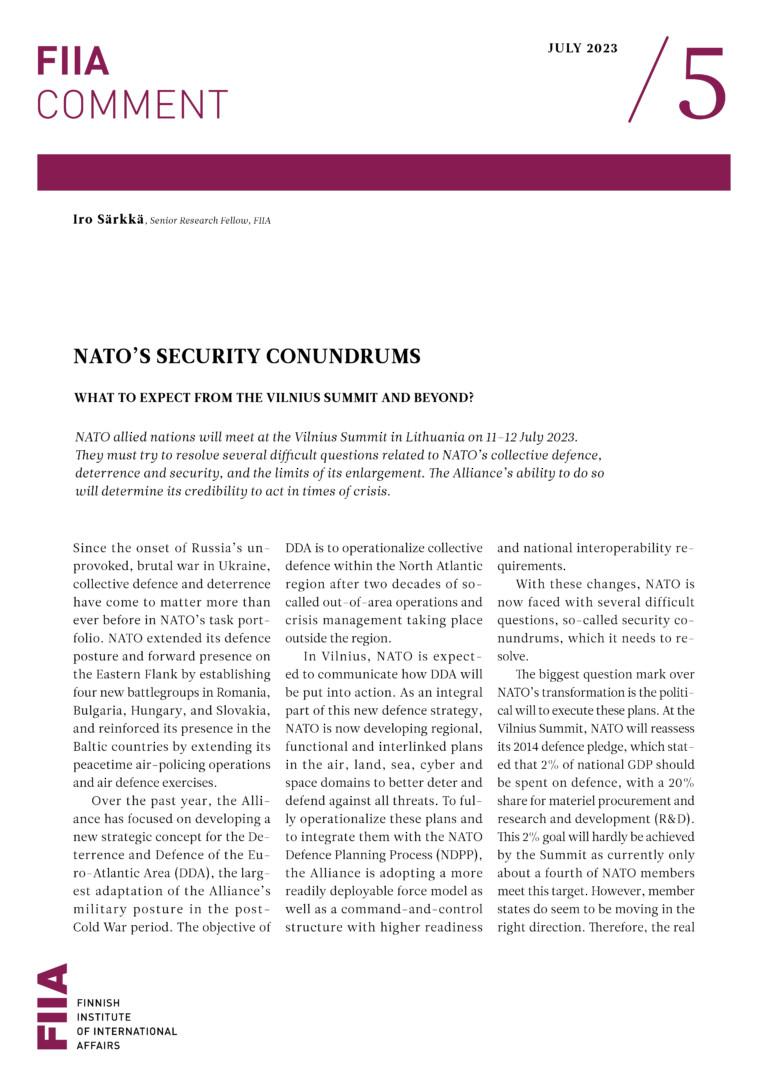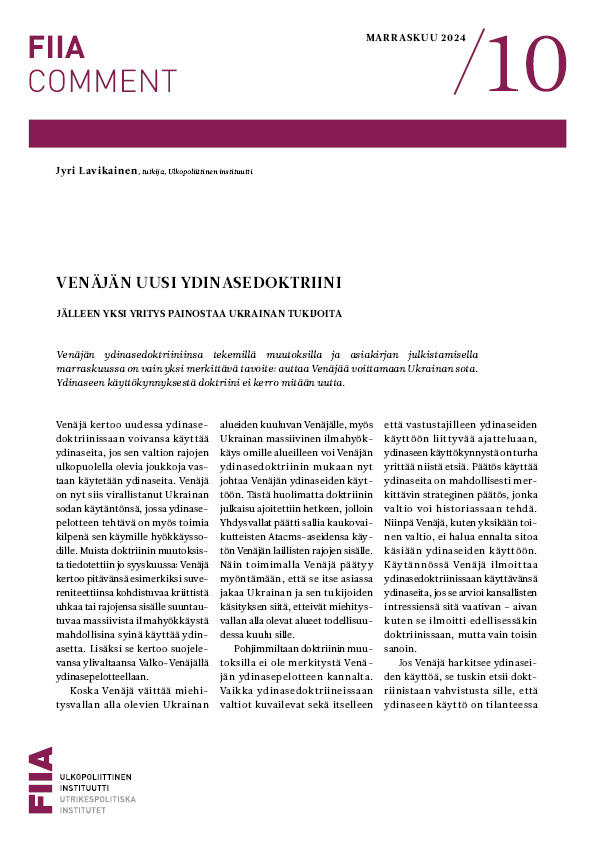What will happen if Russia shifts its tone and eventually offers a “compromise” on Ukraine? In principle, peace negotiations are always preferable to fighting, but European actors need to acknowledge that in practice Russia uses peace processes to perpetuate war. Europe cannot afford to let this happen – again.
Russia has actively produced, intervened militarily in, and maintained so-called frozen conflicts in its neighbourhood in recent decades. A frozen or protracted conflict is an active conflict in which the armed phase has ended, but there is no viable prospect of a political resolution. From Russia’s perspective, its “formula for frozen conflicts” has been an efficient way to restrict its neighbouring states’ sovereignty and political autonomy in practice. Essentially, this is what has happened in South-Ossetia and Abkhazia, and what seemed to be happening in Donetsk and Luhansk – until the full-scale Russian invasion in February 2022.
Typically, Russia has aggravated or created a local conflict in which it has then intervened militarily and justified its aggression by claiming to protect a local population against the host state. After the fighting has ceased, Russia has established a permanent military presence in the separatist entity. Behind the curtain of a frozen conflict, Russia has continued shaping the local circumstances and conflict dynamic in various ways. These include handing out Russian passports to the local population, funding the de facto governments, and Russifying educational systems as well as economic and cultural life.
Since the status of these statelets is internationally unrecognized, their only lifeline runs through Moscow. The longer the conflict lingers, the more dependent they become on Russia. Georgians have described this process as “creeping annexation”, and it often takes place while an international peace process is ongoing – a process that is going nowhere because it has never been in Russia’s interests to resolve any of these conflicts, but rather to solidify the gains it made during the military offensive.
The Russian full-scale war of aggression against Ukraine, which started on 24 February 2022, appears to be a significant departure from Russia’s traditional frozen conflict formula. Unlike in the past, Russia’s goals in Ukraine are maximalist: Putin has outright denied Ukraine’s sovereignty and the country’s right to independent statehood. Due in part to Russia’s fundamentalism in Ukraine, Western states responded differently to this war compared to their earlier pattern. After all, it is difficult to stand by while Russia attempts to take control of the whole country and expressly denies the Westphalian rights of an independent European state with over 40 million citizens.
But what if Russia shifts its tone at some point and eventually offers a “compromise” on Ukraine? Such a proposal could entail Russia keeping the territories it controls and agreeing to take part in negotiations on Ukraine’s security arrangements. Comments by defence minister Sergei Shoigu at the beginning of November in China could indicate that Russia may be moving closer to proposing negotiations – although prior to that, Russia will no doubt attempt to take over the Ukrainian-controlled parts of Zaporizhzhia, Kherson, Luhansk and Donetsk.
Many Western states could be eager to take the Russian bait when it comes to negotiations, as it would appear to offer a way out of a distressing situation that many currently describe as a stalemate. However, it is essential to keep in mind that yielding to Russian territorial demands would not actually solve anything. Russia is not interested in gaining Ukrainian territory as such, but landgrabs and frozen conflicts are ways to achieve other more important goals. These include diluting Ukrainian sovereignty and independence, forcing Ukraine into Russia’s exclusive sphere of influence, and keeping it out of Western institutions, such as the EU and NATO.
Russia would also establish an even stronger permanent military presence on Ukrainian territory (in addition to what it already has) and would continue the war after it had restored its military capabilities and recovered economically. However, the goals of the piecemeal approach would also remain maximalist, and Russia would still threaten the entire statehood of Ukraine. As researcher Ruth Deyermond has aptly put it: frozen conflicts are installment plan wars.
In principle, peace negotiations are always preferable to fighting, but European actors need to acknowledge that in practice Russia uses peace processes to perpetuate war. Russia exploits these processes to gain legitimation and to change realities on the ground. Through international peace frameworks (such as the Minsk agreements) and negotiation formats (such as the Normandy meetings), Russia has been able to gradually change the conflict dynamics, semi-legitimize the status of its proxies in negotiations, and solidify its military presence in the disputed territories. In negotiations, Russia often portrays itself as one of the “responsible” great powers along with France and Germany, rather than the aggressor that it clearly is.
The only sustainable way to stabilize Europe in the long term is to offer credible security guarantees to Ukraine. Although in principle this can happen outside of NATO, in practice such ad hoc arrangements are more likely to be tried and tested by Russia. NATO security guarantees can also be extended exclusively to the territory that is currently controlled by Ukraine – similarly to the way in which NATO dealt with the de facto split of Germany during the Cold War years.
Russia will not stop its aggression in Europe unless it is forced to do so. The question is, will we learn this lesson now, or only after the next round of war and devastation in Europe?







